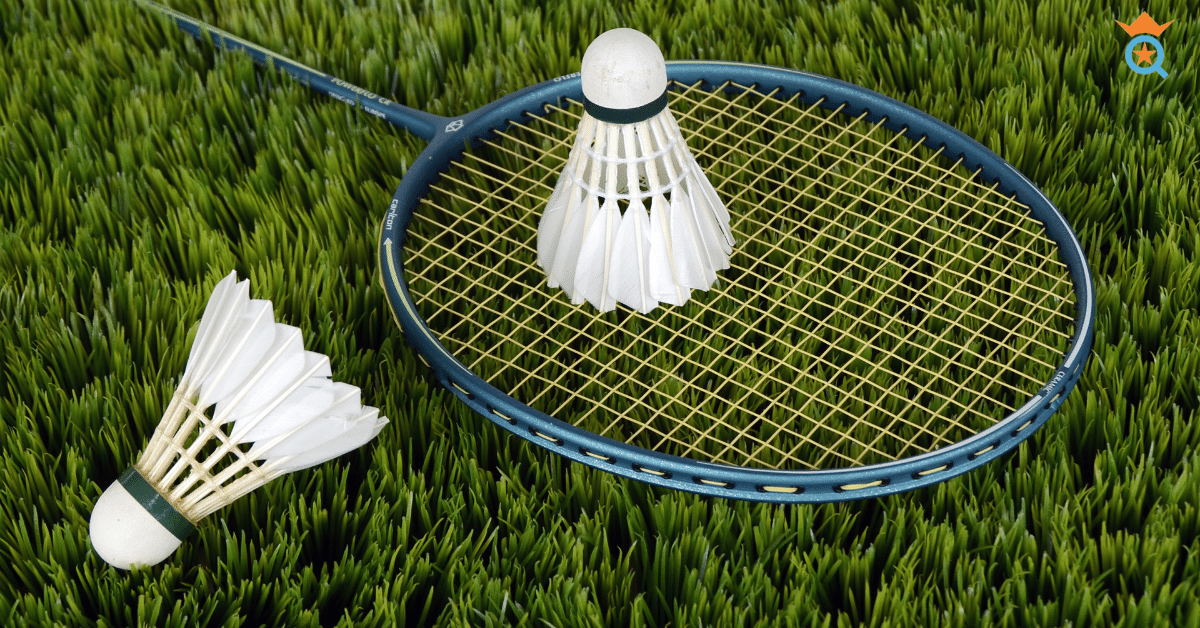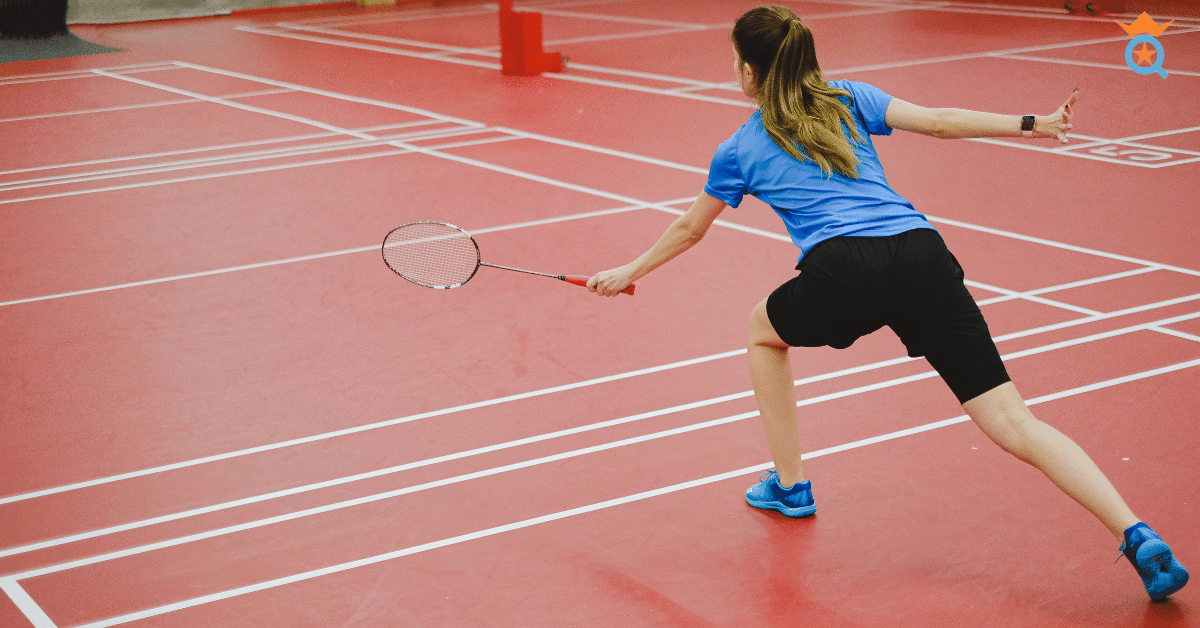One may wonder about the humble beginnings of the sport we know and love today, badminton. The origins of badminton games are rich with historical undertones, deeply woven into the cultures of ancient Greece, China, and India.
It's a story that dates back more than 2,000 years, with the game of battledore and shuttlecock being its predecessor.
Fast forward to today, badminton has transcended time and geographical boundaries, garnering immense global popularity as one of the newest sports in the Olympic Games.

The Birth of Badminton
In the picturesque setting of Gloucestershire, England, stands Badminton House, the ancestral home of the Duke of Beaufort.
This historic estate is a keystone in the history of badminton, serving as the birthplace of the modern badminton game.
Here, the sport was christened 'badminton' and marked the dawn of the sport's formal journey.
The Role of British Army Officers
Adding to the origins of the badminton game is a group of British army officers stationed in India during the 1860s. They brought a game called 'Poona' to England, a variant of battledore and shuttlecock.
The Duke of Beaufort fell in love with the game, eventually leading to the first unofficial All-England Badminton Championships for men in 1899.
A year later, women's participation was embraced with the organization of the first badminton tournament for women.

The Badminton World Federation
The Foundation
In the ever-evolving world of badminton, a new chapter began in 1934 with the formation of the International Badminton Federation (now known as the Badminton World Federation, BWF).
Establishing this world governing body marked a significant milestone in the history of badminton.
Nine members came together to form the Federation:
- Canada
- Denmark
- France
- Netherlands
- England
- New Zealand
- Ireland
- Scotland
- Wales
The United States joined this league four years later. It is the authoritative voice for all badminton federations worldwide and sets global rules, regulations, and technical officiating standards.
Badminton Tournaments
The role of BWF went beyond being a regulatory body. It took the sport of badminton to the international stage, orchestrating badminton tournaments with a global outreach.
The first major event hosted by the International Badminton Federation was the men's world team championships, fondly known as the Thomas Cup, in 1948.
In the years that followed, international badminton saw an expansion with the introduction of more events such as:
- Uber Cup (women's team)
- World Championships
- Sudirman Cup (mixed team)
- World Juniors
- World Grand Prix Finals
- World Cup
These competitions span various categories, from singles to doubles and mixed doubles events, offering a dynamic and exciting platform for badminton players worldwide.
Revolutionizing the Sport of Badminton
One pivotal moment in badminton's evolution was when BWF entered into a multi-million-dollar contract for the commercial and television rights of the Thomas and Uber Cups.
It marked the start of badminton's journey from being 'just a game' to a global phenomenon. The sport was further catapulted into the limelight with its Olympic Games debut in Barcelona.
This development led to a surge in membership and sparked the interest of corporations in the sport.

Badminton and the Olympic Games
Badminton first graced the Olympic stage as a demonstration sport in 1972, followed by its appearance as an exhibition sport in 1988. In 1992, it earned the status of a full-medal Olympic sport, with categories for men's and women's singles and doubles. Mixed doubles was a later addition to the 1996 Atlanta Olympic Games.
This recognition elevated badminton's status in sports, establishing it as an official sport with increased visibility and appeal.
The Olympic Games not only bolstered the profile of badminton in participating countries but also inspired new generations of players and enthusiasts.

Badminton Today
Recreational Play and Competitive Play
Over the years, badminton has carved a niche for itself in recreational play and international competitions. On a recreational level, it is a popular outdoor summertime activity, often played in backyards or on the beach with family and friends. It's a fun game, a perfect mix of skill, agility, and camaraderie.
On the competitive front, badminton is an extreme sport, played indoors on a badminton court with proper shoes and governed by strict rules.
Whether singles or doubles matches, competitive badminton demands physical strength, speed, precision, and strategic gameplay.
Badminton Associations and Clubs
As badminton has grown in popularity, numerous associations and clubs have been established worldwide. These organizations have played a critical role in nurturing the sport at the grassroots level, helping enthusiasts and professionals hone their skills. One of the most notable and oldest is the Bath Badminton Club, which has a rich history.
Here are some critical facets of badminton associations and clubs:
- Learning Resources: These associations and clubs serve as valuable resources for learning the sport. They offer lessons and coaching programs for players of all ages and skill levels. From understanding the basic rules and techniques to advanced training for professional play, these institutions cover a broad spectrum of badminton knowledge and skills.
- Practice Facilities: Badminton clubs provide well-equipped facilities where members can practice regularly. These facilities often include indoor badminton courts, ensuring enthusiasts can play year-round, regardless of weather conditions.
- Competition Opportunities: Badminton associations organize regular tournaments and matches, allowing members to apply their skills in a competitive setting. These events range from friendly, internal club matches to more regional severe or national competitions.
- Community Building: Badminton clubs foster a sense of community among their members. They provide an environment where people with a shared interest in badminton can connect and interact. They often host social events and activities that strengthen members' bonds, promoting camaraderie and sportsmanship.
- Promotion of the Sport: Badminton associations play a crucial role in promoting the sport locally and nationally. They work to increase visibility, popularize the sport, and attract more people to take up badminton, whether as a hobby or a professional career.
- Development Programs: Many badminton associations run development programs to identify and nurture young talent. They provide support, resources, and training opportunities for aspiring players with promise and potential for professional badminton.
- Advocacy and Representation: At a higher level, national and regional badminton associations advocate for the sport. They represent their members' interests and work to influence policies and decisions that impact the sport and its players.
Badminton associations and clubs are instrumental in supporting and developing the sport. They create an environment that facilitates learning, encourages practice, fosters competition, builds community, and promotes badminton. With their continued efforts, the mark of badminton will continue to thrive and reach new heights in the years to come.

The Future of Badminton
Badminton continues to flourish and diversify in the contemporary landscape, with emerging powerhouses in the sport presenting new challenges to the long-standing hegemony of established strongholds.
The Badminton World Federation (BWF) and numerous national and regional associations remain committed to advancing and promoting the sport, fostering fresh talent through various initiatives and competitions.
Countries traditionally dominating the sport, such as China, Indonesia, and Denmark, are now contending with rising forces from nations like India, Japan, Spain, and Thailand. This shift in power dynamics illustrates the global reach and universal appeal of badminton, as well as the successful endeavors of the BWF to develop the sport.
The Federation's initiatives, such as the World Junior Championships, global development programs, and the introduction of technologies like Hawk-Eye, indicate their dedication to improving the sport, nurturing budding talent, and ensuring the longevity of badminton's global success.

The Bottom Line
The origins of the badminton game may have begun centuries ago, but its spirit remains alive and vibrant in the heart of every player, enthusiast, and spectator. Whether playing badminton for fun or competition, remember you're part of a rich tradition across countries and generations.
As we continue to enjoy the thrill of the badminton game, let's also appreciate its historical journey that has helped shape the sport as we know it today.
Whether it's a friendly match at a local badminton club, a high-stakes game at the England Open Badminton Championships, or an international challenge at the World Junior Championships, each game is a tribute to the history of badminton.
Embrace the fun game of badminton, but also delve deeper and understand the origins of the badminton game. It's a journey worth exploring!








